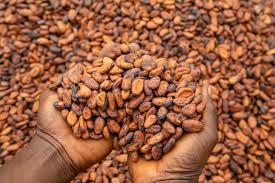QUITO — Ecuador is projected to harvest over 650,000 metric tons of cocoa in the 2026/27 season, a surge that could propel the South American nation past Ghana to claim the title of the world’s second-largest cocoa producer behind Ivory Coast. The forecast, shared by Ivan Ontaneda, chairman of Ecuador’s cocoa exporters association (Anecacao), highlights the country’s steady output growth amid West Africa’s production woes, potentially reshaping global supply chains for the key chocolate ingredient.
Ecuador’s ascent stems from superior yields—averaging 800 kg per hectare compared to Ghana’s under 500 kg—and favorable farmer incentives, where growers receive about 90% of world prices versus 60-70% in West Africa. “Ecuador’s production has shown steady growth for years. Ghana’s production has been volatile,” Ontaneda told Reuters, crediting agroforestry systems that blend cocoa with shade trees, plantains, and fruits to boost biodiversity and curb diseases. The nation, already the Americas’ top producer at 440,000 tons in 2022/23, eyes 570,000 tons for 2025/26 and 800,000 by decade’s end.
Ghana, long a cocoa powerhouse since independence in 1957 under Kwame Nkrumah, faces headwinds that could cap its 2025/26 output at 600,000 tons, per a Reuters poll. Illegal gold mining (galamsey) has invaded farms, destroying soil and water sources, while swollen shoot virus ravages crops despite vaccination drives. These challenges, compounded by climate shocks, have slashed yields and fueled debates on resource management, as echoed by former Speaker Prof. Aaron Mike Oquaye’s recent call to harness natural assets like cocoa to avoid an 18th IMF bailout.
Global cocoa dynamics amplify the shift. Prices doubled to over $12,000 per ton in 2024 due to West African shortfalls—Ivory Coast and Ghana supply half the world’s 5 million tons annually—but eased 33% this year thanks to Ecuador’s ramp-up. Yet, elevated levels persist, benefiting exporters while pressuring chocolate makers like Hershey and Mars. For Ghana, losing second place would sting: Cocoa accounts for 15% of exports and 800,000 jobs.
Challenges and Opportunities for Ghana’s Cocoa Sector
Ghana’s woes are multifaceted. The government raised the producer price to $5,040 per tonne for 2025/26, but experts urge diversification into processing—currently just 20% of beans are refined locally—to capture value and shield against price swings.
Ecuador’s model offers lessons: Public-private investments in seedlings and training have doubled output since 2010, without the scale of illegal activity plaguing Ghana.
With Ivory Coast eyeing 2.2 million tons, the race for second spot tests Ghana’s resilience. If projections hold, Ecuador’s milestone could spur urgent reforms, ensuring the “black gold” that fueled independence doesn’t slip away.




